Wind Chime Buying Guide
SOUND | DESIGN & MATERIALS | MAINTENANCE & HANGING | PERSONALIZATION
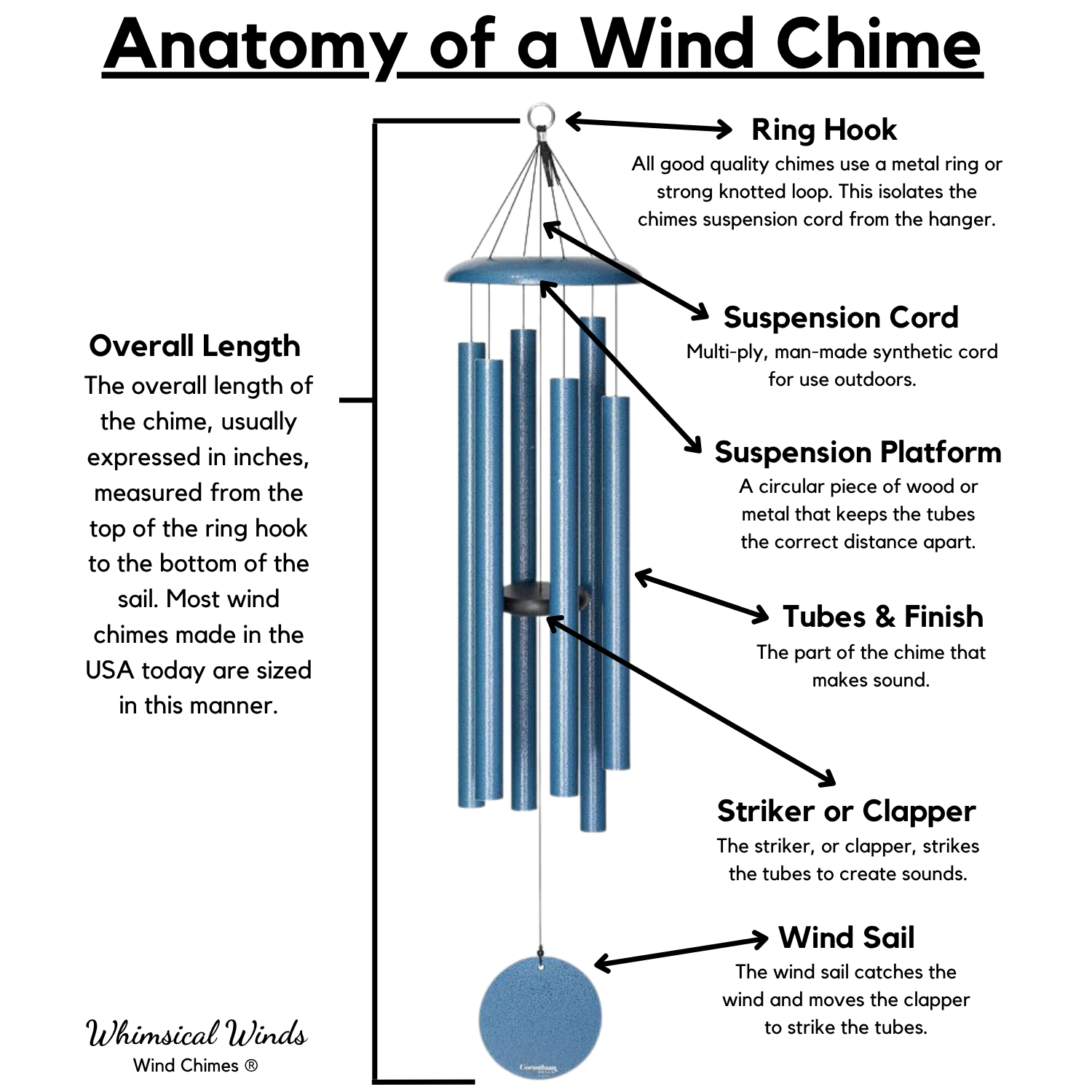
An elaborate breakdown of the wind chime components and their respective names. Reference the image for parts such as tubes, striker, or wind sail.
How Size, Tubes, and Design Affect Sound
The number of tubes on a wind chime determines how many different notes it can play. Chimes with more tubes offer a wider range of tones and more complex harmonies, while chimes with fewer tubes tend to produce a simpler, more focused sound.
Chime length plays a big role in tone. Longer chimes create deeper, fuller sounds, while shorter chimes produce higher-pitched, lighter tones.
The size of the wind sail affects how much wind is needed to make the chime sound. Most of our chimes are designed to start chiming in gentle breezes around eight to ten miles per hour. Smaller sails would respond to lighter wind but would compromise durability. Larger sails may be more durable but require stronger wind to sound consistently.
Tube finish mainly impacts the visual appearance of the chime. Since wind chimes are often on display, style can be just as important as sound when choosing the right one for your space.
Sounds, Keys & Chords
Every wind chime creates its own unique sound, based on the musical scale it's tuned to. Most of the chimes we offer are precision-tuned to a specific key—such as the scale of A, C, D, or E—which determines the overall tone and mood.
What Does "Scale of A" (or C, D, etc.) Mean?
The scale is simply the group of notes the chime is tuned to. When you see a chime described as "tuned to the scale of A," it means each tube is tuned to a note that harmonizes with the others in that key. You don’t need to be a musician to appreciate it—just know that each key has a slightly different feel when you listen.
How Does It Affect the Sound?
Higher keys, like C or D, tend to sound light, cheerful, and airy. Lower keys, like A or G, have a deeper, richer, and more calming tone. Many of the chimes we carry are tuned to pentatonic scales, which include five notes designed to always sound pleasing and harmonious, no matter how the wind moves them.
Bigger Chimes, Deeper Tones
Shorter chimes create higher-pitched, delicate sounds. Longer tubes produce deeper, fuller tones that resonate more slowly and with greater depth.
How to Choose the Right Sound
Because musical scales can be hard to imagine, we recommend listening to the sound samples on each product page to help you decide. If you're looking for something soothing and meditative, deeper tones—like those in the scale of A or G—are a great choice. If you prefer a brighter, more energetic sound, you may enjoy a chime in the scale of C or D. If you’re buying a gift and aren’t sure which tone to choose, chimes tuned to a pentatonic scale are a safe and popular option, as they’re crafted to sound beautiful in any setting.
Materials & Designs
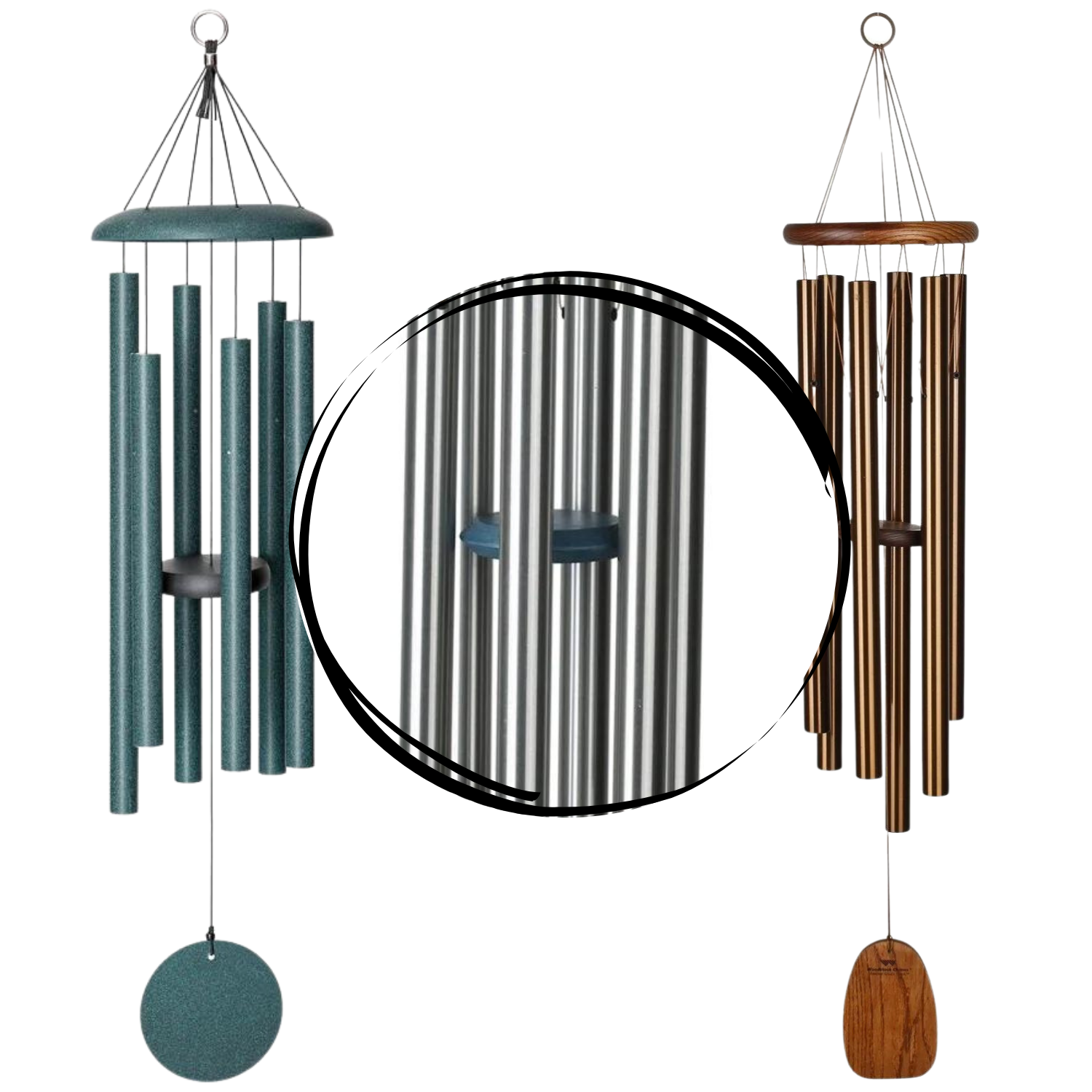
Materials
Metal Chimes
Metal wind chimes are our best sellers, for good reason! Because of their durability and high tuning accuracy, these chimes are the perfect gift. Only metal wind chimes can be tuned to specific tones and notes! Metal wind chimes come in a variety of melodies, and their tubes can even be tuned to well-known songs and themes. Metal wind chimes are also waterproof and rust resistant. You don't have to worry about them chipping or losing their beauty, so they'll last year after year.
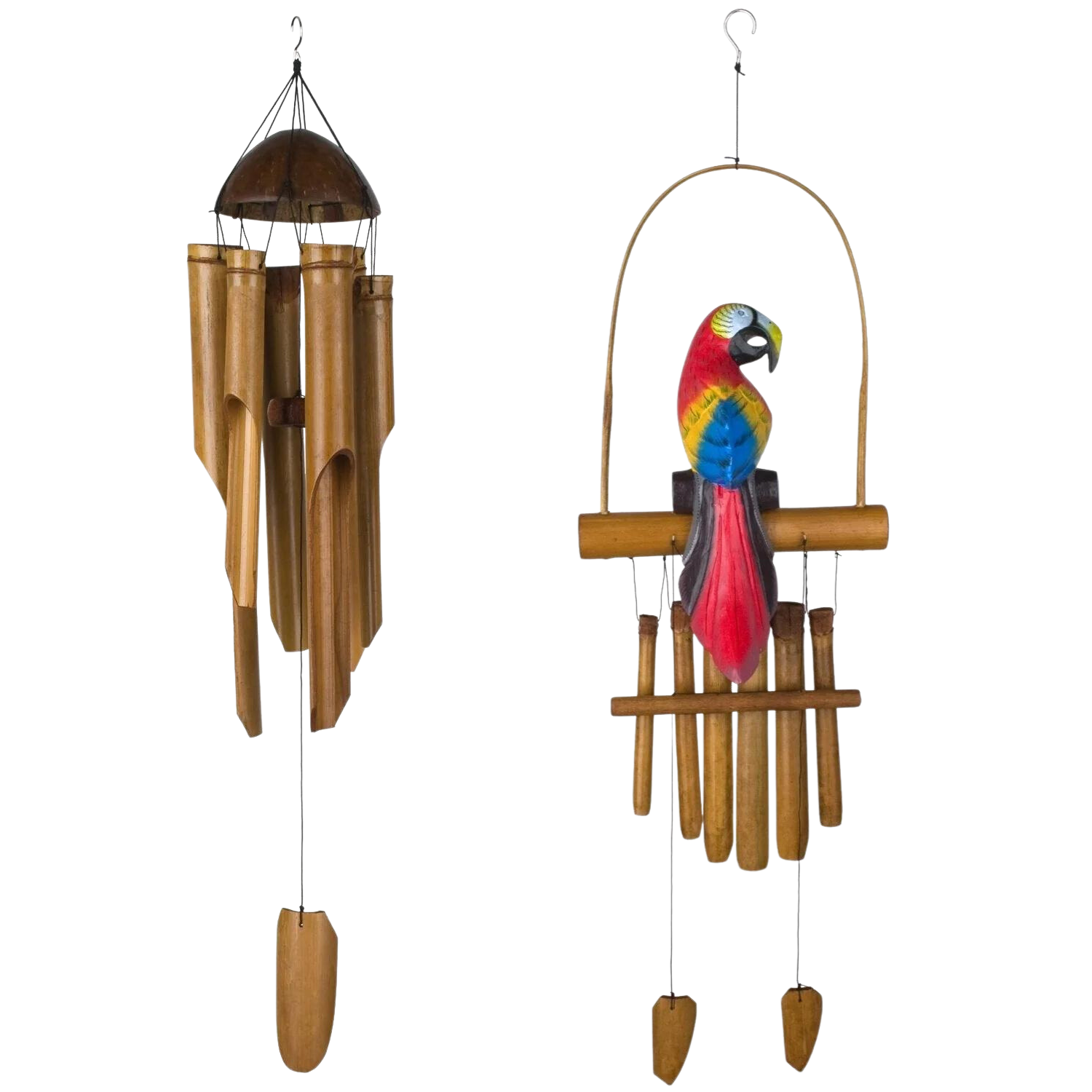
Materials
Bamboo
Bamboo wind chimes are not as durable as metal wind chimes, but they are designed to provide beautiful, soothing sounds. The tones of bamboo wind chimes are hollow, deep and resonant. Although they cannot be tuned, these wind chimes can emulate relaxing sounds like rain or exotic drums. Since bamboo is a plant, it is lightweight and some splitting can occur. It may happen to some degree in your wind chime, though this has a minimal effect on sound quality. Choose bamboo wind chimes for a natural and environmentally friendly way to relieve stress, with tones that will soothe the soul.
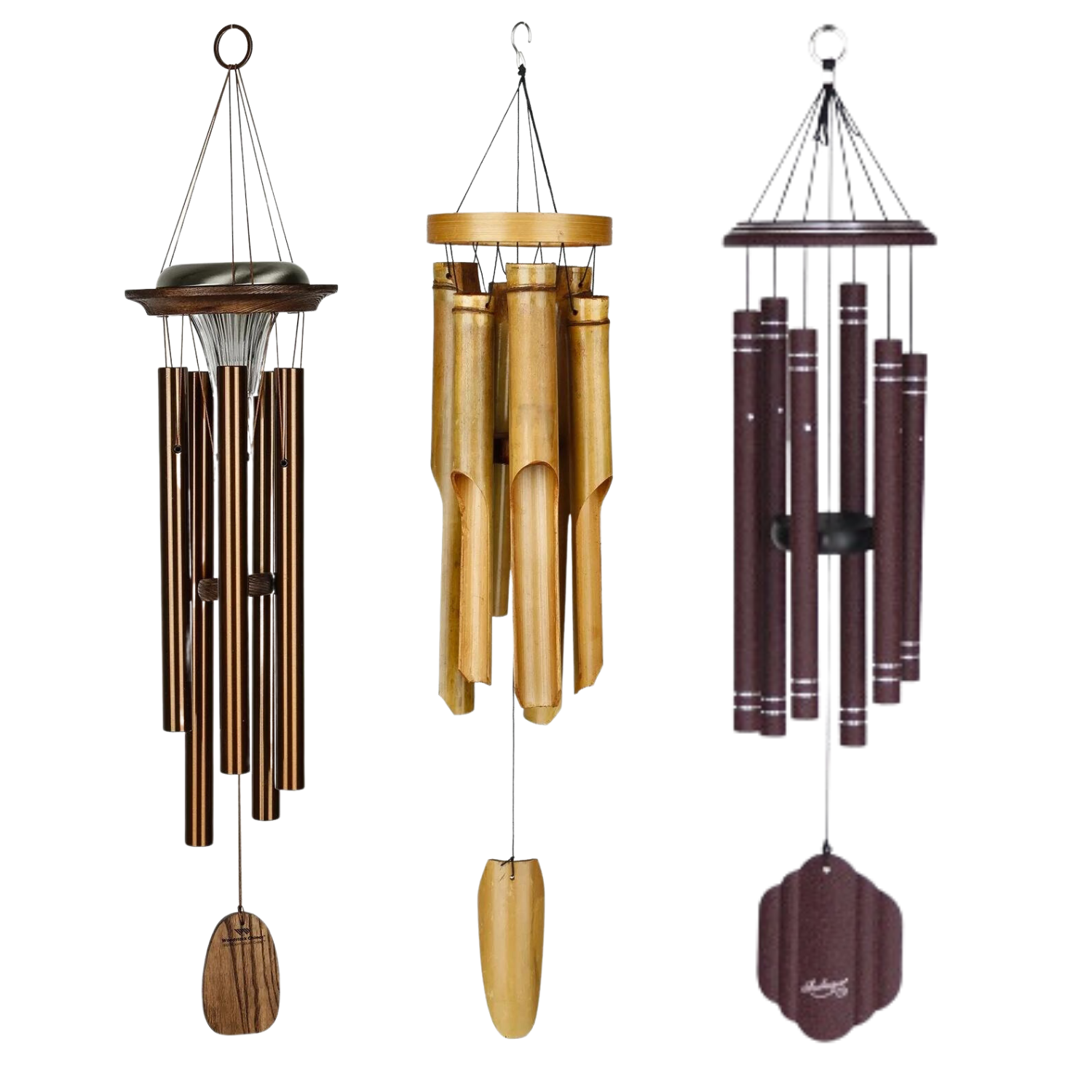
Design
Tubular Chimes
Tubular wind chimes are the most popular wind chime design. These wind chimes are available in a vast array of styles and sizes to suit any location. Tubular wind chimes are made of several vertically hanging tubes, with each tube lending its own tone.
A tubular wind chime with tubes of varying length sounds great and offers exceptional visual appeal. Tubular wind chimes are typically aluminum, pewter or bamboo.
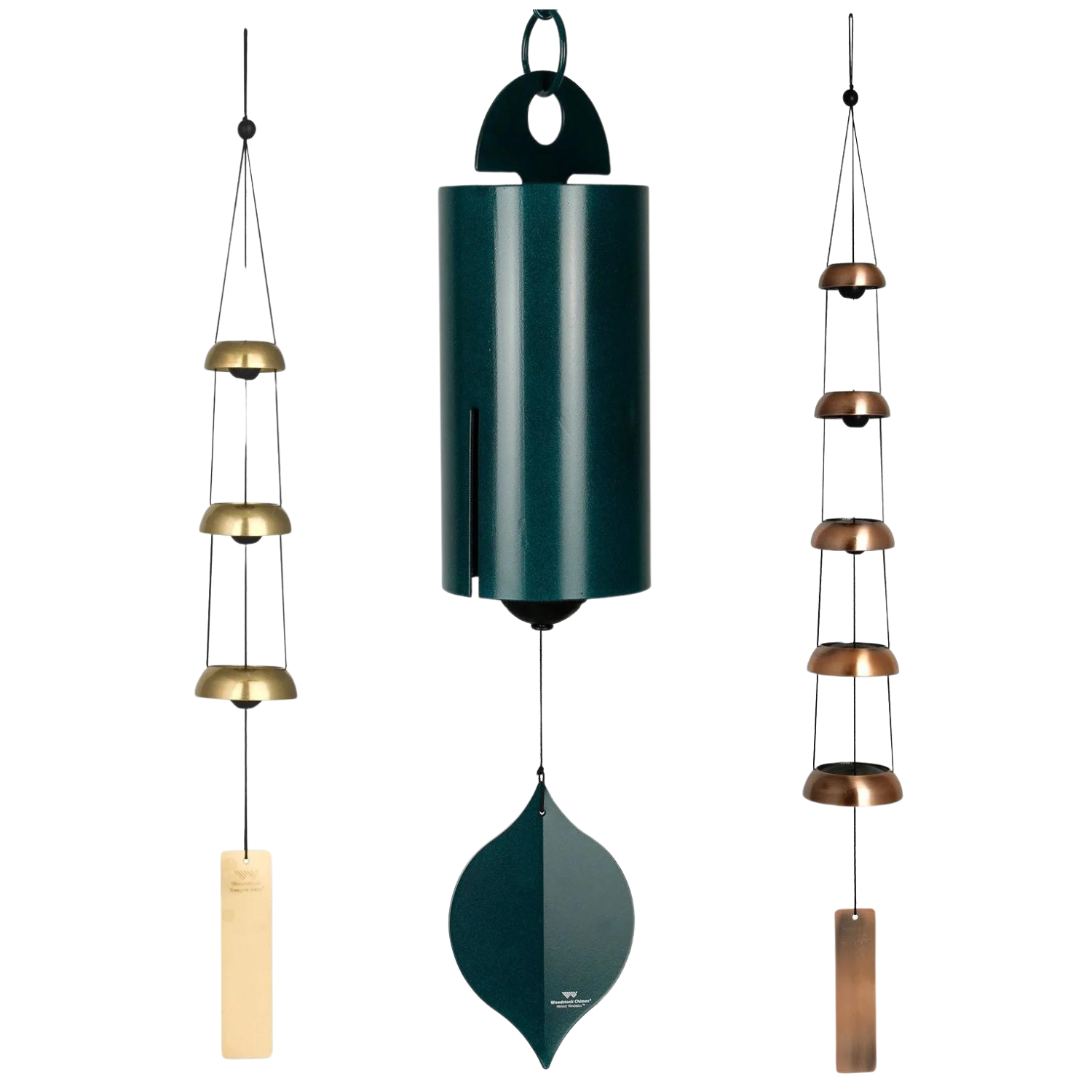
Design
Bell Chimes
Bell wind chimes are made out of one or more bells. Unlike the tubular wind chimes, the clappers on bell chimes make sounds by contacting a single metal piece and not multiple tubes.
These wind chimes are available in traditional styles or in unique contemporary styles with modern, geometrically designed bells. Most of our bell wind chimes are made of brass
Engraving & Personalization
Engraving will add at least 1 day to all shipping times, and during busy* seasons up to 4 days.
(*April, May, June, November, & December)
We personally select only the highest quality wind chimes and gifts, which are then customized just for you! All of our engravings are done in-house with an American made laser engraver.
We will engrave almost anything that can be fitted nicely onto a wind chime wind sail. However, we will not engrave copyrighted images, text, or images that directly disparages or belittles people by name, political affiliations, or religions.
Our engraving will not affect the warranty or musical performance of the wind chime.
All of our manufacturers know we are engraving their products and have given their permission to do so.
Most of the wind chimes we offer are available to be engraved.
We can engrave names, dates, short phrases, poems, certain logos, clipart, and icons by request.
If you have a request, please feel free to reach out with our Contact Us page.
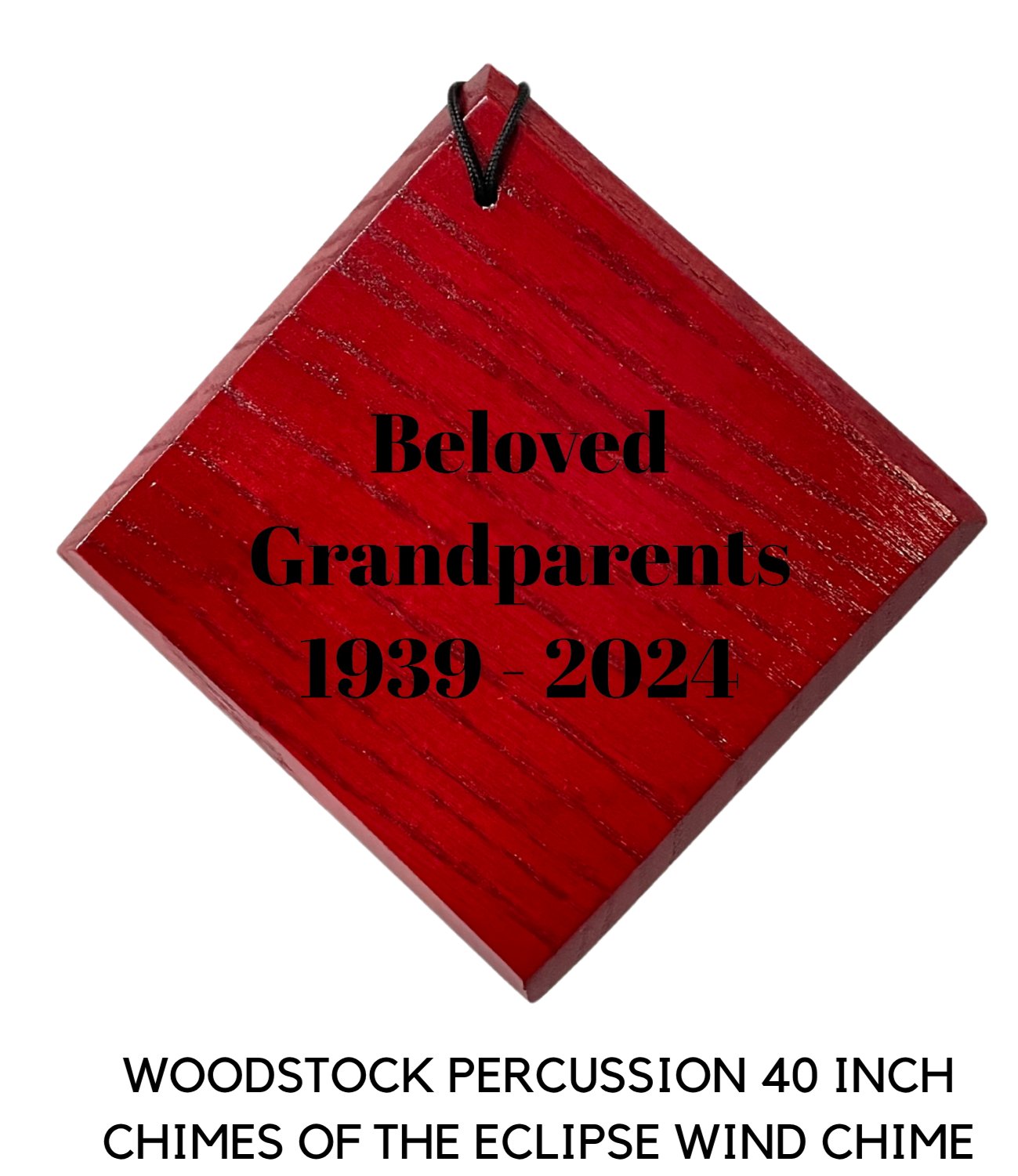
Personalization
Circular & Diamond Engravings
Many of our wind chimes come with a circular or a diamond shaped wind sail.
Our engravers will always orient the text to the center, unless requested via email.
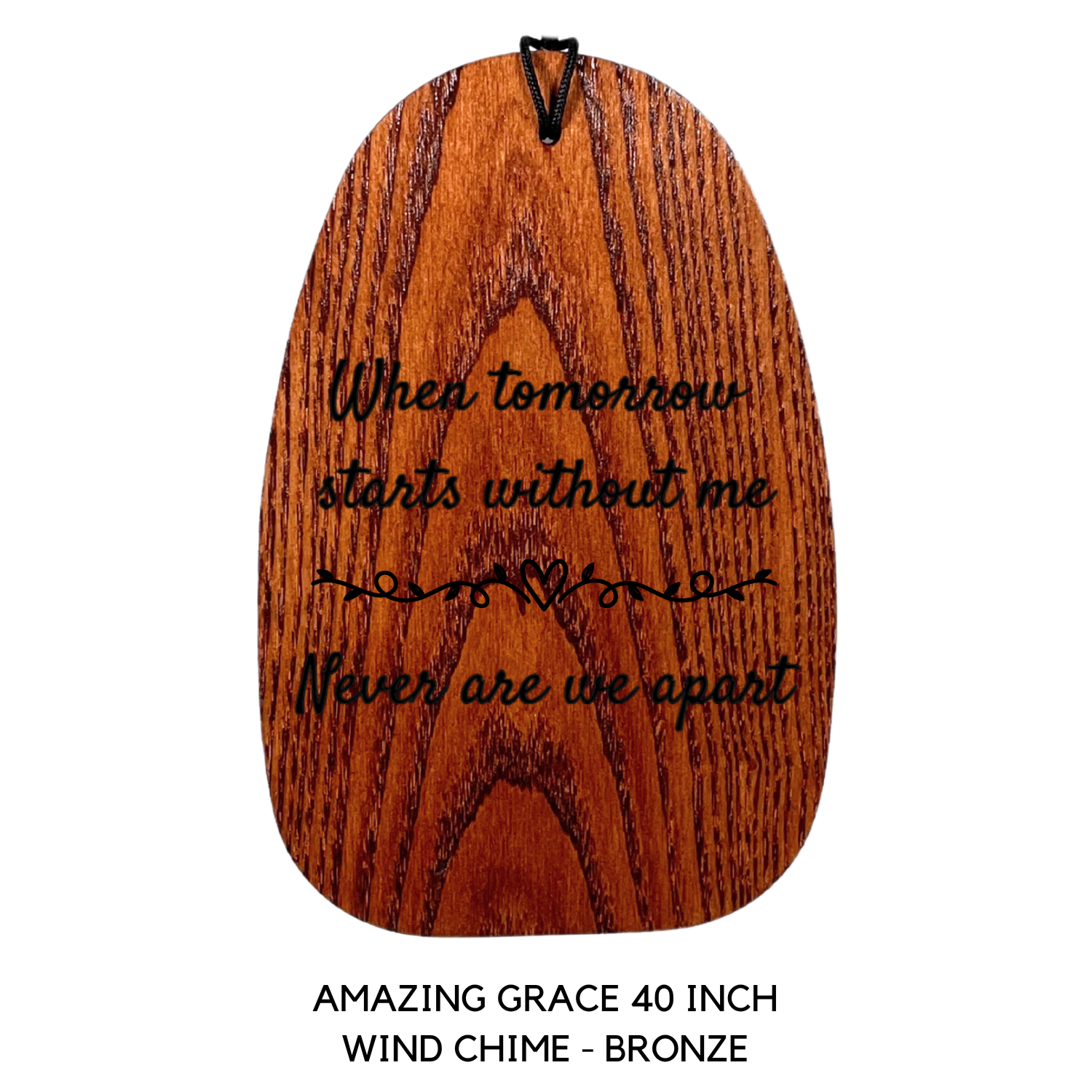
Engravings
Vertical Engravings
Vertical sails come in both metal and wooden varieties. A text format that fits a vertical rectangle works best. Some examples are shown below. Our engravers will always orient the text to the center, unless requested via email.
Hanging & Maintenance
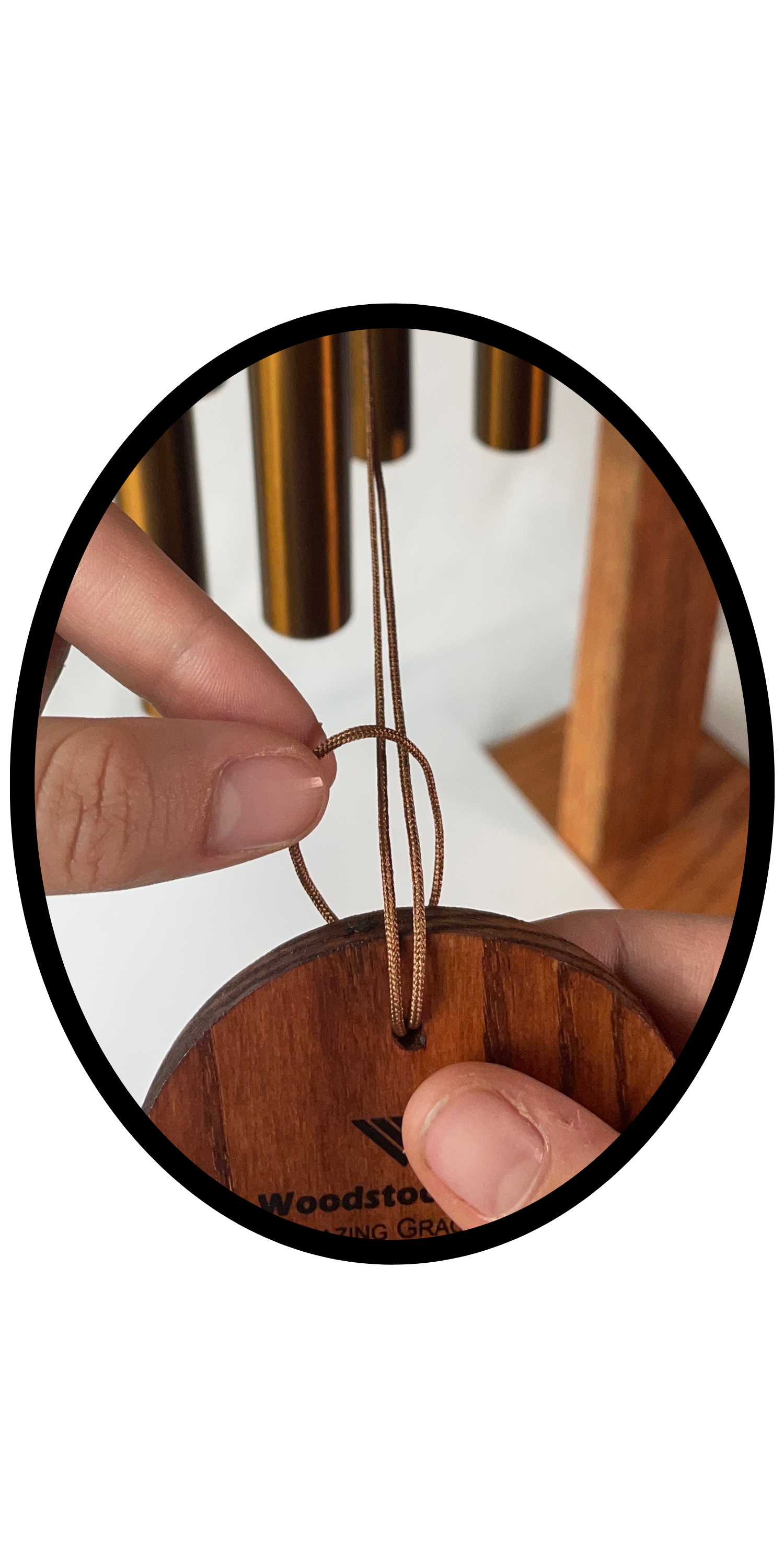
Maintenance
Wind Sail Loop
Disconnecting the wind sail
- Locate the sliding loop of string at the top of the windcatcher
- Loosen the string by tugging on the bottom part of the loop
- When the loop is large enough, slip the windcatcher through the sliding loop
- Pull the windcatcher off the loop of string
Reconnecting the wind sail
- Loosen the string by tugging on the bottom part of the loop
- When the loop is large enough, slip the windcatcher through the sliding loop
- Pull the windcatcher off the loop of string
- Pull the loop so it's longer than the windcatcher
- Open the loop and slide the windcatcher through it
- Pull tight to secure the windcatcher
Hanging
No matter how you choose to hang them, make sure to directly attach the chime to the ring or loop at its upper part.
Refrain from adding extra chain or string to lower the chime, as this can cause the entire chime to swing excessively, when in reality, you likely only want the central string and clapper to move.
For optimal results, hang your chime in a location where the wind can access it from multiple directions.
If you're hanging it from a building, an open corner works best. It's a good idea to experiment with different hanging heights, as wind tends to be stronger at greater elevations.
Be cautious not to hang your chime closer than two feet to a wall, or in proximity to plants, furniture, or any objects that could obstruct or redirect the airflow.
Even if you're on a screened-in porch, keep in mind that the screens might impede the breeze enough to prevent your chime from producing sound.